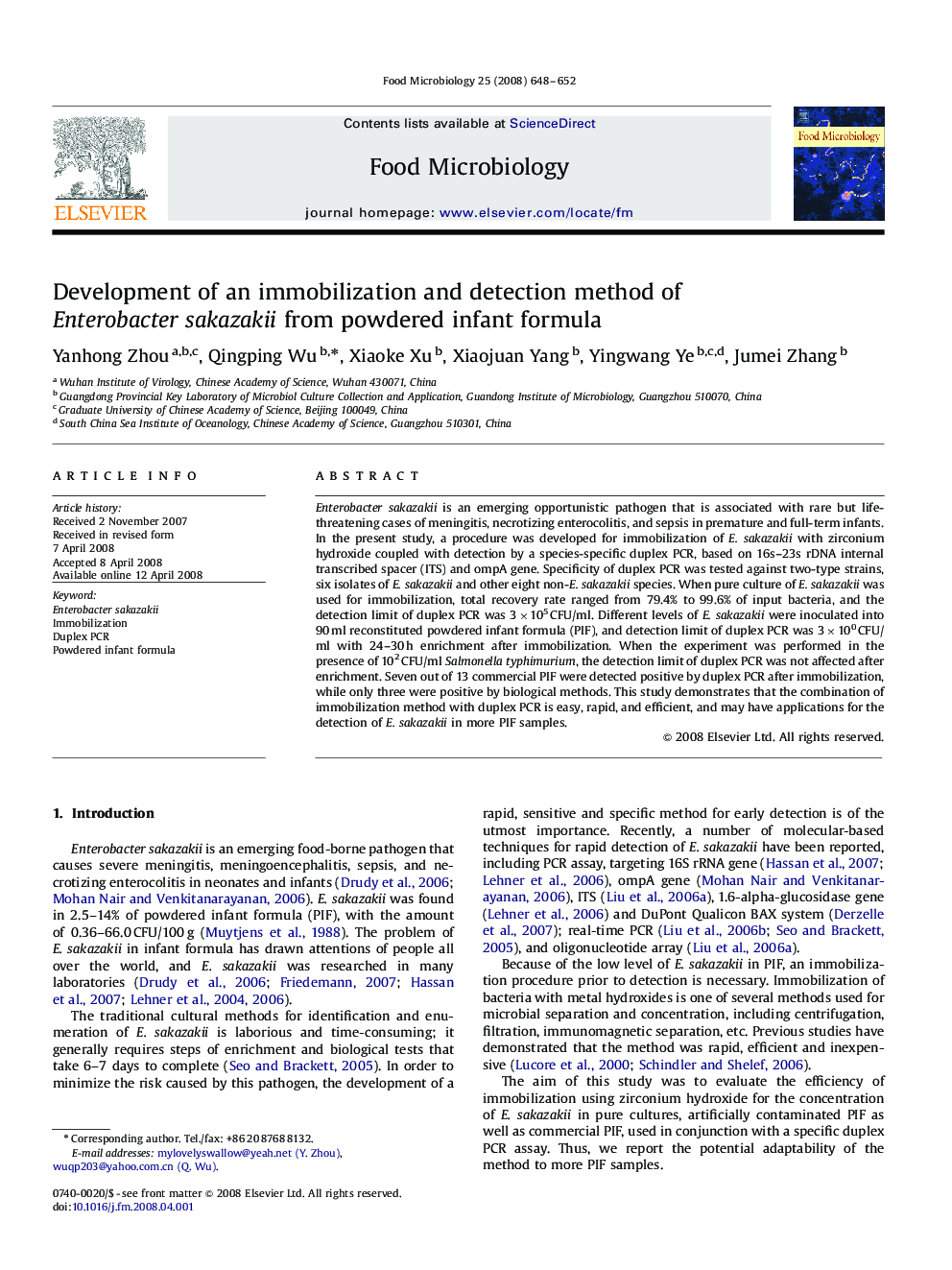| Article ID | Journal | Published Year | Pages | File Type |
|---|---|---|---|---|
| 4363823 | Food Microbiology | 2008 | 5 Pages |
Enterobacter sakazakii is an emerging opportunistic pathogen that is associated with rare but life-threatening cases of meningitis, necrotizing enterocolitis, and sepsis in premature and full-term infants. In the present study, a procedure was developed for immobilization of E. sakazakii with zirconium hydroxide coupled with detection by a species-specific duplex PCR, based on 16s–23s rDNA internal transcribed spacer (ITS) and ompA gene. Specificity of duplex PCR was tested against two-type strains, six isolates of E. sakazakii and other eight non-E. sakazakii species. When pure culture of E. sakazakii was used for immobilization, total recovery rate ranged from 79.4% to 99.6% of input bacteria, and the detection limit of duplex PCR was 3×105 CFU/ml. Different levels of E. sakazakii were inoculated into 90 ml reconstituted powdered infant formula (PIF), and detection limit of duplex PCR was 3×100 CFU/ml with 24–30 h enrichment after immobilization. When the experiment was performed in the presence of 102 CFU/ml Salmonella typhimurium, the detection limit of duplex PCR was not affected after enrichment. Seven out of 13 commercial PIF were detected positive by duplex PCR after immobilization, while only three were positive by biological methods. This study demonstrates that the combination of immobilization method with duplex PCR is easy, rapid, and efficient, and may have applications for the detection of E. sakazakii in more PIF samples.
